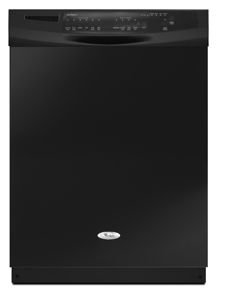Everyone agrees that dishwashers are great timesaving devices, but did you know that they can also save energy and water over hand-washing the dishes? Dishwashers actually use less water than hand-washing and you’ll save even more if you do not pre-rinse the dishes before loading them.
Start by looking for the ENERGY STAR® logo. Dishwashers with this logo conserve at least 25% more energy than U.S. Federal standards.
Using very hot water is the key to getting dishes squeaky clean. Some dishwashers have a device that increases the temperature of the water coming out of your water heater. Another feature you’ll like is the built-in food disposer. It grinds up food particles and flushes them out with the waste water so it is not re-deposited on your dishes.
When making your purchase check the size of the spray holes on the wash arms. The smaller the holds are, the more scrubbing power they provide your dishwasher. Also, check to be certain the dishwasher offers the cycles you need for the types of dishes you have. Many dishwashers offer cycles for pots & pans to fine china and crystal.
If you wash dishes only once every two or three days, you’ll want a rinse and hold cycle to prevent buildup. Also, make sure the rack system will allow you to easily load your dishes. Some dishwashers have fold-down shelving to give you even more flexibility.
If you want to prevent water wastage look for a dishwasher with sensor technology. This feature detects how dirty the dishes are and adjusts the cycle accordingly. Also, to make sure your dishwasher will be quiet look at the amount of the insulation around the dishwasher tub. The thicker it is, the quieter your unit will be.


